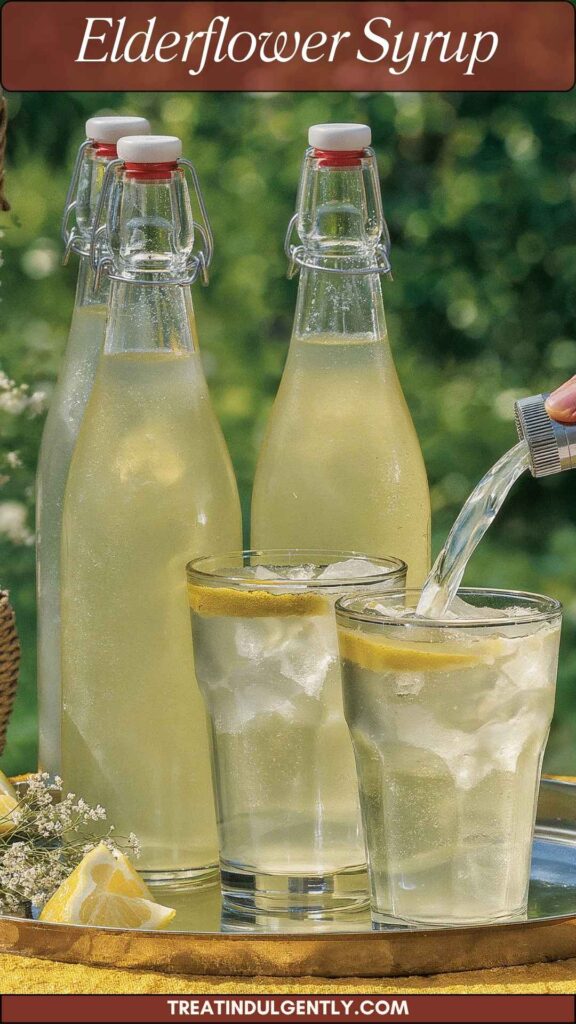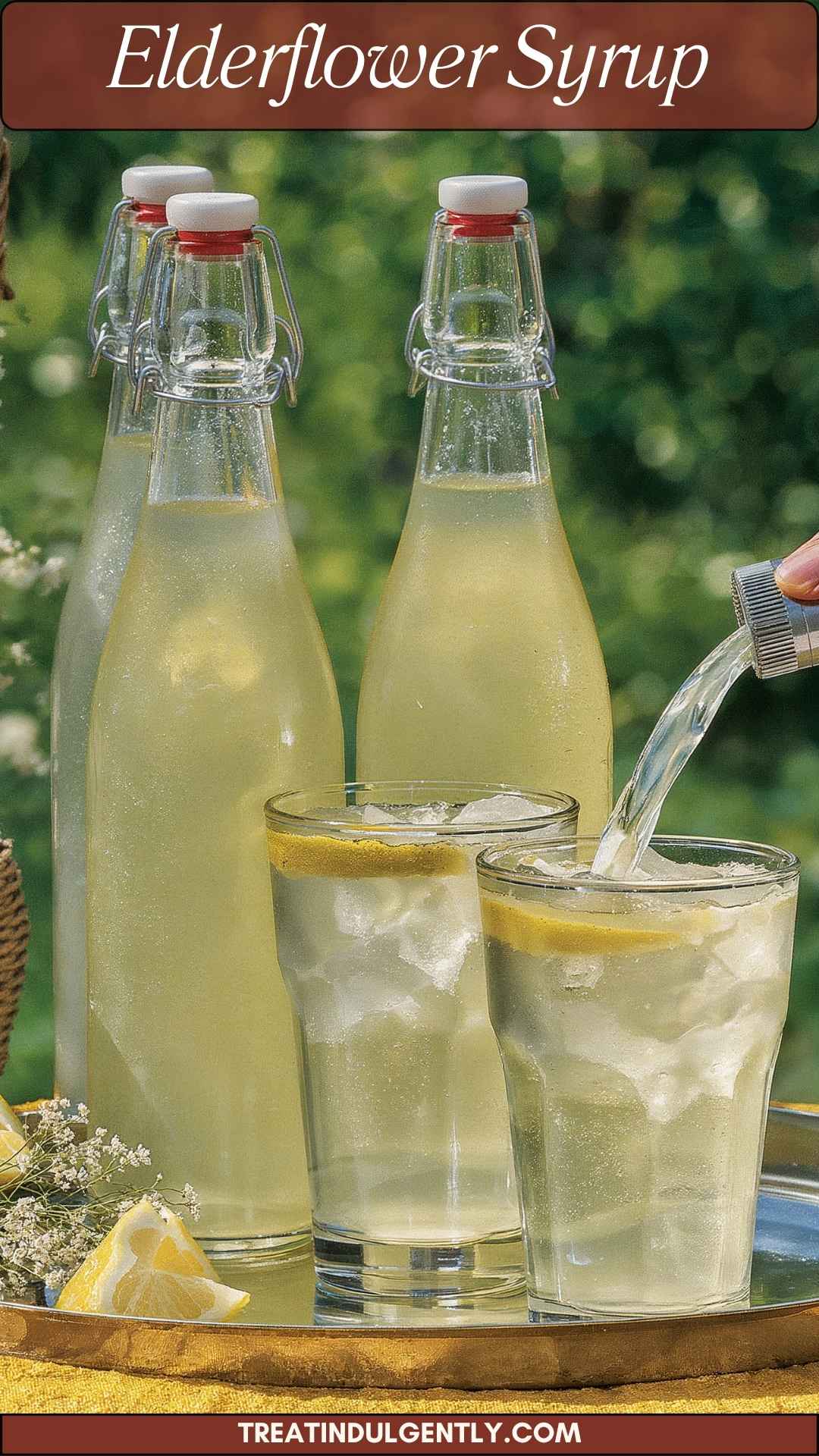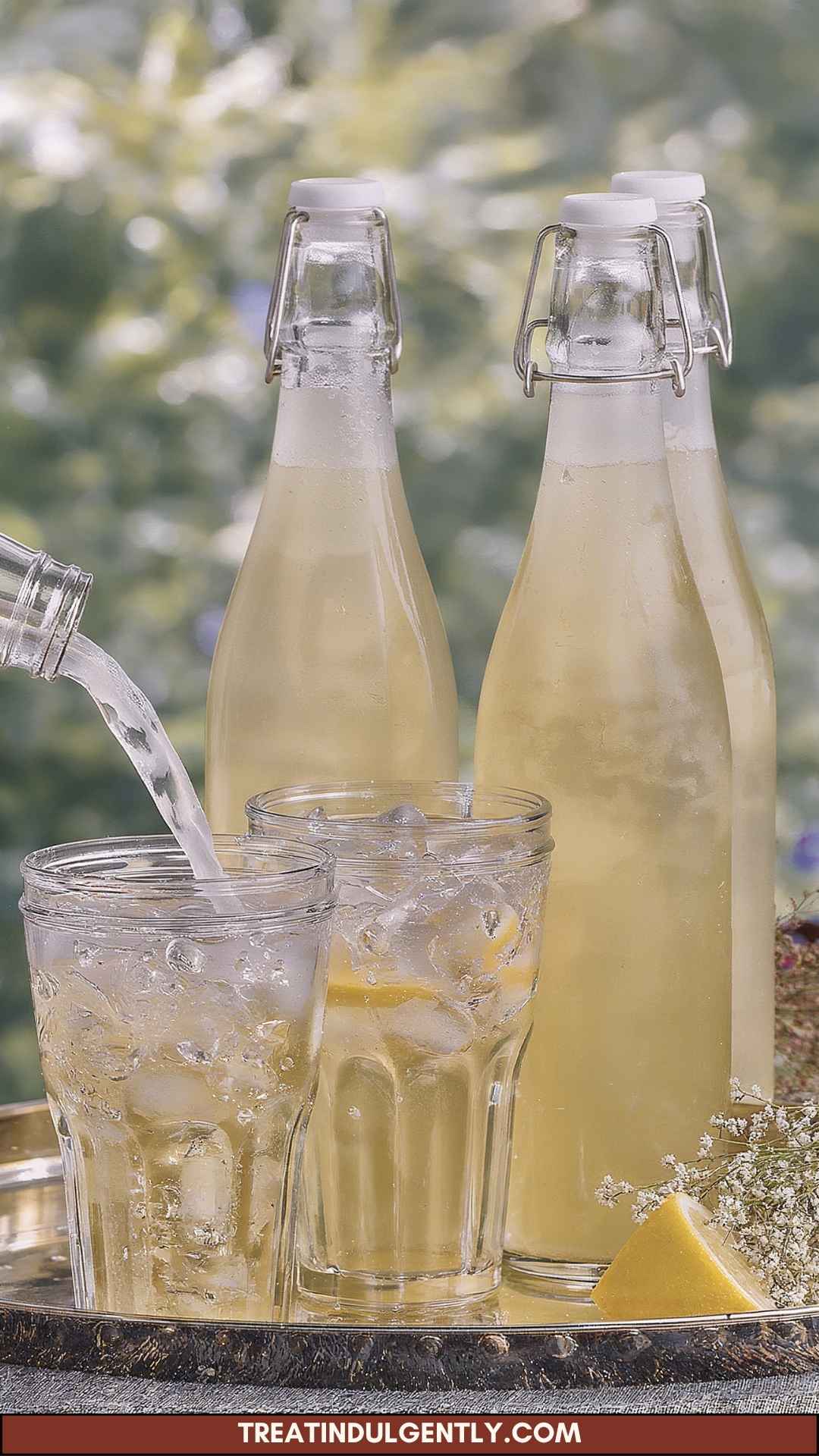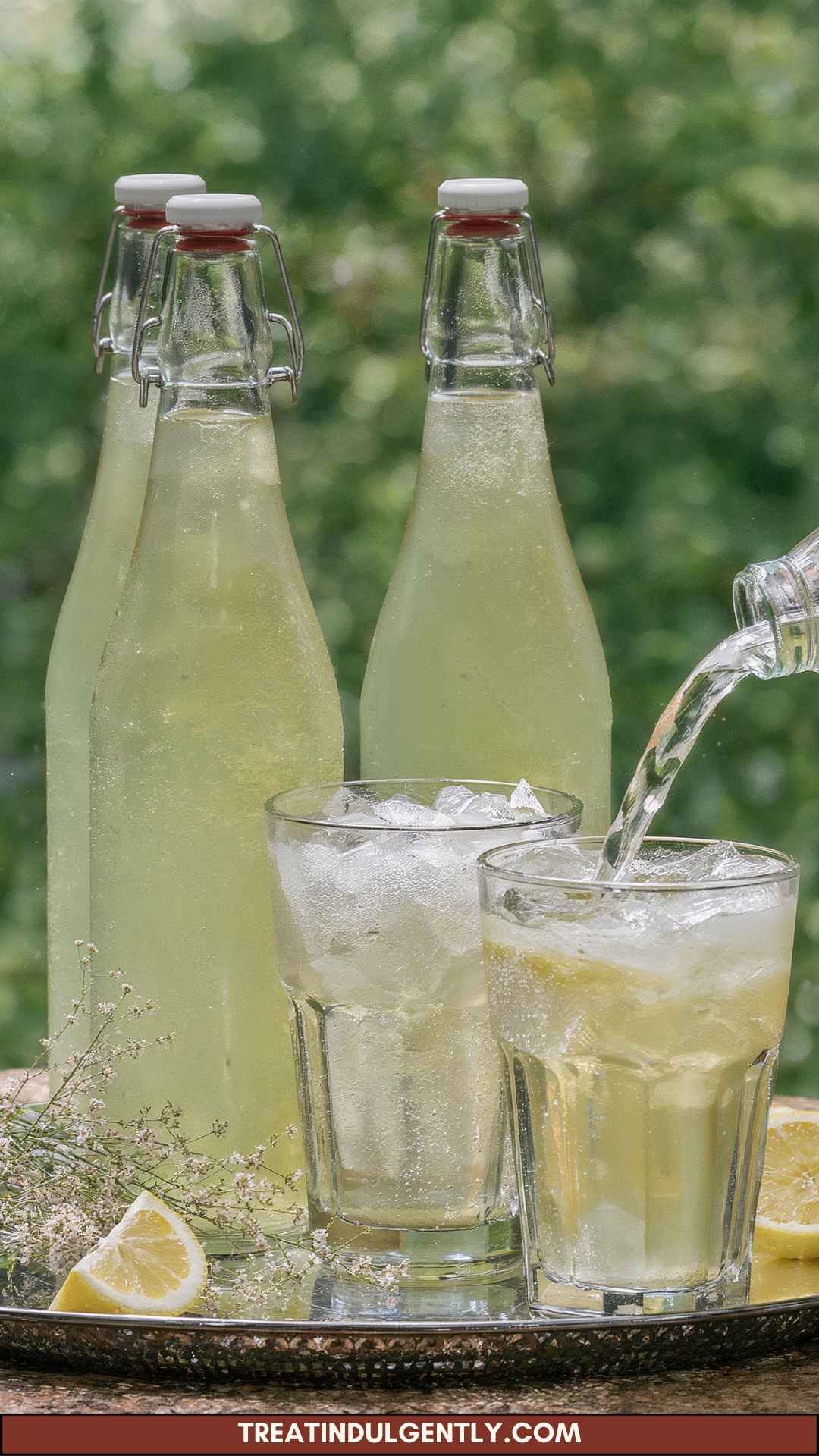Nutrition Facts
Servings 16
- Amount Per Serving
- Calories 50kcal
- % Daily Value *
- Total Carbohydrate 13g5%
- Sugars 13g
* Percent Daily Values are based on a 2,000 calorie diet. Your daily value may be higher or lower depending on your calorie needs.

Before diving into the captivating world of elderflower syrup, let’s take a moment to think about the delightful pairings that can elevate your experience. This syrup is incredibly versatile and can enhance a variety of dishes and drinks. Here are a few of my favorites:

Elderflower syrup is a sweet liquid made from the blossoms of the elderflower tree. The flowers bloom during late spring and early summer, offering a fleeting window to enjoy their unique flavor. Traditionally, this syrup has been used in various culinary applications. Its subtle floral sweetness can elevate drinks, desserts, and even savory dishes.
The syrup is made by infusing the delicate flowers with sugar and water, extracting their flavor to create a treat that can brighten up anything. Homemade elderflower syrup is not only delicious, but it is also a unique way to celebrate nature’s bounty.
You might be wondering what makes this recipe so special. Well, let me tell you!
Gathering the right ingredients is key. For this elderflower syrup recipe, you will need:

The first step is the most fun! Go out and gather fresh elderflower heads. When selecting them, make sure they’re completely open, fragrant, and free of any blemishes. Be mindful of where you’re picking; ensure it’s pesticide-free and safe.
Once you have your elderflowers, rinse them gently under cold water to remove any bugs or dirt. It’s crucial to keep the heads whole; this helps maintain their delicate flavor. Set them aside in a large bowl.
In a medium saucepan, combine 4 cups of granulated sugar with 1 quart of purified water. Heat this mixture over medium heat, stirring until the sugar fully dissolves. This creates the base syrup.
Once your sugar-water mix is boiling, remove it from the heat. Pour the hot syrup over the elderflower heads in the bowl. Add in the lemon juice, zest, citric acid, lemon verbena, and mint if desired. Stir gently to combine, and then cover the bowl with a clean cloth. Let this infusion sit for 24-48 hours in a cool place.
After infusing, strain the mixture through a fine mesh sieve or cheesecloth into a clean glass jar. Discard the elderflower heads and any solids from the syrup. If you like, you can double strain it to ensure clarity.
Store your elderflower syrup in sterilized bottles or jars. Make sure you leave some headspace to allow for temperature changes. Once cooled, seal tightly and store in the refrigerator.
Here are five helpful tips to make your elderflower syrup experience even better:
Elderflower syrup can last up to a month in the refrigerator. For longer storage, consider freezing in ice cube trays. Once frozen, transfer the cubes to a sealable bag. This way, you can enjoy a taste of summer whenever you want to recreate your favorite elderflower drinks.
A typical serving of elderflower syrup (1 tablespoon) contains approximately:
This syrup mainly consists of carbohydrates from sugar. While it’s a sweet treat, moderation is key, especially if you are keeping an eye on sugar intake.
Here are five delightful ways to serve your elderflower syrup, perfect for brightening up your summer:
If you can’t find elderflowers, don’t worry! There are a few alternatives you can try. Here are five substitutes worth considering:

As we wrap up this delightful journey into the making of elderflower syrup, I hope you’re inspired to give it a try. You now have the tools, tips, and techniques to create a treat that's not only delicious but also connects you with the beauty of nature. Imagine serving this syrup at your next gathering or simply indulging in your own little treat.
So, grab some elderflowers if they're in season, or think about planting an elderflower bush for the future, and let the sweet, floral magic of elderflower syrup bring joy to your kitchen! Happy cooking!
Hello there! Today, I’m thrilled to share my favorite elderflower syrup recipe with you. If you haven’t tried elderflower syrup yet, you’re in for a treat!
This syrup captures the delicate floral notes of elderflower and transforms them into a sweet elixir that can be enjoyed in countless ways. I discovered elderflower syrup a few summers ago when I stumbled upon some wild elderflowers during a hike. The world seemed to stop as I inhaled their sweet scent. Little did I know, I was about to embark on a delicious adventure in my kitchen.
Crafting elderflower syrup is not just a cooking endeavor; it's a chance to connect with nature and create something wonderful. Let’s explore what elderflower syrup is, why it’s so adored, and how you can make it yourself.
Servings 16
* Percent Daily Values are based on a 2,000 calorie diet. Your daily value may be higher or lower depending on your calorie needs.